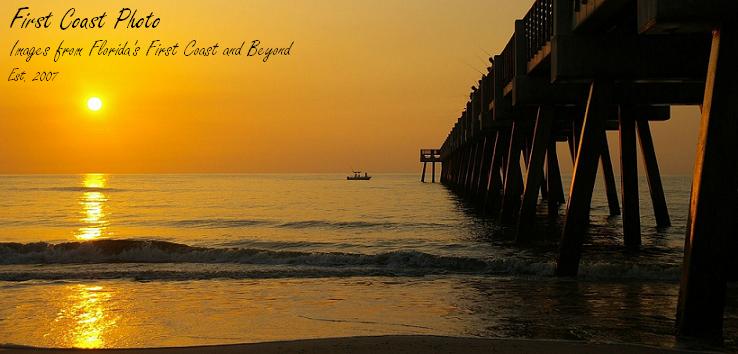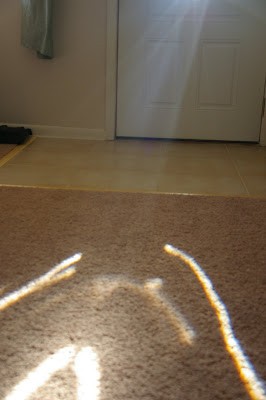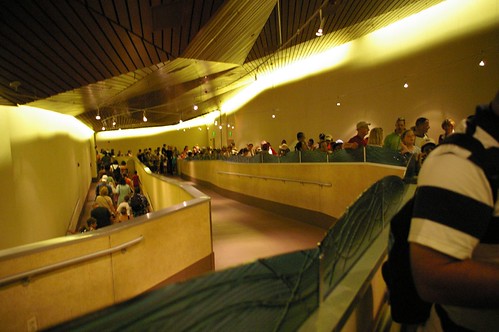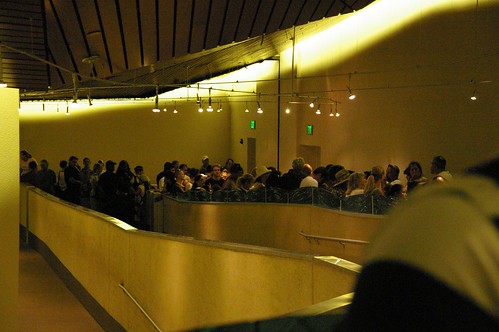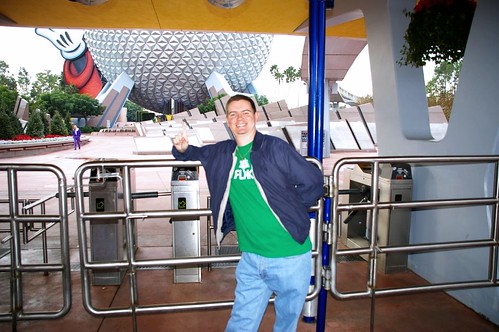
Saturday, May 31, 2008
Friday, May 30, 2008
Sky Watch Friday

 The sun setting bright pink earlier this week, framed perfectly by our neighbor's roof and pine trees in their backyard.
The sun setting bright pink earlier this week, framed perfectly by our neighbor's roof and pine trees in their backyard.Visit Tom for more Skywatch Fun.
Thursday, May 29, 2008
Mischa Set: 3 "The Thinker"

Tuesday, May 27, 2008
ABC Wednesday: "S" is for Segway

ABC Wendesday for the letter "S" is a fun one - the Segway! I've never ridden one yet, but plan to sometime within the next year - they give tours at Disney World on them and there are also places around our town that give nature tours on the off-road version of the Segway (yes, they make an off-roading Segway, and also a golfing Segway to carry your golf bag and scorecard, but other types as well).
.JPG)
Computers and motors in the base of the device keep the Segway PT upright when powered on with balancing enabled. Users lean forward to go forward, lean back to go backward, and turn by using a "Lean Steer" handlebar, leaning it left or right. Earlier HTs used a twist grip to steer by twisting the grip left and right. Segway PTs are driven by electric motors at up to 5.6 m/s (12.5 mph/20 km/h). Gyroscopic sensors (see vibrating structure gyroscope) are used to detect tilting of the device which indicates a departure from perfect balance. Motors driving the wheels are commanded as needed to bring the PT back into balance. Segways do not have or need mechanical brakes; this makes their use illegal on public roads in jurisdictions which classify them as some form of motor vehicle.
In laws that regulate it, the applicable category is sometimes called "electric personal assistive mobility device" (EPAMD). A niche that Segways have been often adopted into is transportation across military bases, warehouses, corporate campuses or industrial sites, or neighborhoods in place of walking or bicycles.
.JPG)
The advance buzz about the then-unknown product was, at times, hyperbolic. Steve Jobs claimed that it would be "as big a deal as the PC".[1] Articles were written in major publications speculating on it [3], [4]. The product was unveiled 3 December 2001 on the ABC News morning program Good Morning America [5]
In September 2003 the Segway PT was recalled because of the possibility of some PTs not being able to provide enough propulsive power to maintain balance while still in motion, particularly when the batteries are near the end of charge, allowing the rider to fall[2]. With a new software patch to version 12.0, the PT will automatically slow down and stop in response to detecting that the battery's power capability is low, thus allowing a rider to dismount safely.
In August 2006, Segway discontinued all previous models and announced new second generation designs that upgraded many elements of the previous transporters. The Gen II PT, marketed under the two product lines, i2 and x2, allows users to steer by leaning the handlebars to the right or left, which matches the intuitive nature of leaning forward and backward to accelerate and decelerate. Another feature is wireless InfoKey access.[3]
In September 2006, all 23,500 of the vehicles were voluntarily recalled. A glitch within the "speed limiter" created a risk of causing a rearward torque to be suddenly applied to the wheels, throwing off its rider.[4][5] Segway released a patch to its software (version 14.2) to resolve the problem.
The invention, development, and financing of the Segway is the subject of a narrative nonfiction book, Code Name Ginger (in paperback as Reinventing the Wheel), by journalist Steve Kemper.
 The dynamics of the Segway PT are identical to a classic control problem, the inverted pendulum. The Segway PT has electric motors powered by batteries which can be charged from household current. It balances with the help of dual computers running proprietary software, two tilt sensors, and five gyroscopes. (The gyroscopes do not affect the balance; they are merely used as sensors.) The servo drive motors rotate the wheels forwards or backwards as needed for balance or propulsion. The rider accelerates or decelerates by leaning forward or backwards in the direction they wish to travel. On older models, steering is controlled by a twist grip on the left handlebar, which simply varies the speeds between the two motors, rotating the Segway PT (a decrease in the speed of the left wheel would turn the Segway PT to the left). Newer models enable the use of "leaning" to steer as well as move forwards or backwards.
The dynamics of the Segway PT are identical to a classic control problem, the inverted pendulum. The Segway PT has electric motors powered by batteries which can be charged from household current. It balances with the help of dual computers running proprietary software, two tilt sensors, and five gyroscopes. (The gyroscopes do not affect the balance; they are merely used as sensors.) The servo drive motors rotate the wheels forwards or backwards as needed for balance or propulsion. The rider accelerates or decelerates by leaning forward or backwards in the direction they wish to travel. On older models, steering is controlled by a twist grip on the left handlebar, which simply varies the speeds between the two motors, rotating the Segway PT (a decrease in the speed of the left wheel would turn the Segway PT to the left). Newer models enable the use of "leaning" to steer as well as move forwards or backwards.
The Segway PT is built simply to stay balanced in one place. Designed to mirror the process of human walking, if the rider standing on an initially balanced Segway PT leans forward, therefore offsetting the balance, the PT moves forward to regain balance just as in walking a leg moves forward to retain balance. With the Segway PT, changes from a balanced status are first detected by the gyroscopes, and signals are passed on to the onboard computers which then direct motors to regain balance. This process occurs about 100 times per second, so small adjustments to maintain balance occur almost immediately after the balance is offset by the rider.[7]
The side effect of this balancing system is that as the Segway PT balances itself the entire unit changes position in the direction it has moved to restore balance. (For example, if the rider leans forward, the entire Segway PT will move forward from its original position, until the rider restores an upright position on the unit.) This is precisely how the Segway PT is controlled - the balancing and movement is essentially one combined system.
The Segway PT features a governor (speed limiting) mechanism. When the Segway PT approaches the maximum speed allowed by the software, it intentionally begins to tilt slightly backwards. This moves the platform out in front, and leans the handlebars backwards towards the rider, eventually nudging the rider to lean back slightly and slow the Segway PT down. If not for the governor, riders would be able to lean farther than the motor could ever compensate for. The Segway PT also slows or stops immediately if the handlebar of the unit (or forward bag) nudges into any obstacle.
For the rest of the article on the Segway, its history, and uses, check out: http://en.wikipedia.org/wiki/Segway
For more ABC Wedesday fun, check out Mrs Nesbitts Place.
Monday, May 26, 2008
Mischa Set: 1
Sunday, May 25, 2008
Sunbeams
Saturday, May 24, 2008
Who Hoo?
Friday, May 23, 2008
Sky Watch Friday

When you live in a navy town, watching the skies often results in the sighting of naval aircraft. Here we actually have two naval bases - one an actual port for ships and the other a naval air station for only planes.



Thursday, May 22, 2008
Under Construction
 Bob's Barricades... who is Bob? Why did he decide to make barricades? How did that conversation go?
Bob's Barricades... who is Bob? Why did he decide to make barricades? How did that conversation go?"Honey, could you pass the potatos?"
"Yes, dear. Oh, and by the way, I'm quitting my high paying corporate job to open a company that makes nothing but construction barricades."
"You're what!?"
But make barricades Bob does, and every single barricade you see - at least in our part of the US - is a Bob's Barricade so he must be doing something right, and probably making tons of money doing it. Road construction around here is the state passtime, it seems, so I don't imagine Bob runs low on orders.
Now we all just need to go out and find our own "barricades" to make ourselves rich.
Maybe caution tape?
 No, looks like that one is taken already, too. Drats. :)
No, looks like that one is taken already, too. Drats. :)Tuesday, May 20, 2008
ABC Wednesday: "R" is for Redcoat

In honor of all our British blogging friends across the pond, my ABC Wednesday for the letter R is Redcoat!
 Redcoat is a nickname given to British soldiers of the 17th to 19th centuries due to the fact that the uniform of the army included a red coat.
Redcoat is a nickname given to British soldiers of the 17th to 19th centuries due to the fact that the uniform of the army included a red coat.

 From an early stage the facings (lapels, cuffs and collars) of the red coat were varied, depending upon which regiment the uniform belonged to. Examples were scarlet for the 33rd Regiment of Foot, yellow for the 44th Regiment of Foot and buff for the 3rd Regiment of Foot. An attempt at standardisation was made following the Cardwell Reforms of 1881, with English and Welsh regiments having white, Scottish yellow, Irish green and Royal regiments dark blue.
From an early stage the facings (lapels, cuffs and collars) of the red coat were varied, depending upon which regiment the uniform belonged to. Examples were scarlet for the 33rd Regiment of Foot, yellow for the 44th Regiment of Foot and buff for the 3rd Regiment of Foot. An attempt at standardisation was made following the Cardwell Reforms of 1881, with English and Welsh regiments having white, Scottish yellow, Irish green and Royal regiments dark blue.

Scarlet tunics ceased to be general issue upon British mobilisation in August 1914. The Brigade of Guards resumed wearing their scarlet full dress in 1920 but for the remainder of the Army red coats were only authorised for wear by regimental bands and officers in mess dress or on certain limited social or ceremonial occasions (notably attendance at Court functions or weddings). The reason for not generally reintroducing the distinctive full dress was primarily financial, as the scarlet cloth requires expensive cochineal dye.
As late as 1980, consideration was given to the reintroduction of scarlet as a replacement for the dark blue "No. 1 dress" and khaki "No. 2 dress" of the modern British Army, using cheaper and fadeless chemical dyes instead of cochineal. Surveys of serving soldiers' opinion showed little support for the idea and it was shelved.
Information mostly taken from: http://en.wikipedia.org/wiki/Red_coat_(British_army)
All photos taken in St. Augustine, FL during December 2007 at a living history event depicting the "British period" of the city from 1763-1784.
Visit Mrs. Nesbitt's Place for all the ABC Wednesday fun.Monday, May 19, 2008
Sunday, May 18, 2008
What a tangled web we weave...

Saturday, May 17, 2008
Friday, May 16, 2008
Sky Watch Friday

There wasn't much going on in the sky last week while I was at the TPC @ Sawgrass, so rather than looking up I caught this week's Sky Watch Friday post by looking down into the reflections on the canal of the 6th hole.
 Visit Tom for more Sky Watch fun!
Visit Tom for more Sky Watch fun!
Thursday, May 15, 2008
Wednesday, May 14, 2008
ABC Wednesday: "Q" is for Queue

ABC Wednesday for the letter Q. Poor letter Q. No love. :)
Since I lacked a photo of any of the various brass or woodwind quartets or quintets I have ever played in, I had to come up with something else. So I borrow a word from our friends across the pond and choose "queue", which isn't exactly common in the US. We just call them lines, mostly.
Queue comes from a French word of the same spelling, but that word was based on the Latin word Cauda, meaning a tail, as on an animal.
So for illustrations are photos from various queueing areas around Disney World, where there are rarely a shortage of lines to wait in.
Some various translations of the word queue:
Czech: fronta cs(cs) f.
Danish: kø
Dutch: rij nl(nl)
Finnish: jono fi(fi)
German: Wartezimmer, Warteschlange
Hebrew: תוֹר (tor) m.
Hungarian: sor hu(hu)
Italian: fila it(it) f.
Portuguese: fila pt(pt) f.
Russian: очередь ru(ru) (óčer'ed') f.
Spanish: fila es(es), cola es(es), linea es(es) f.
Swedish: kö sv(sv)
But then sometimes you just get lucky and wind up first in line, so there is no queue for youeue. :)
Visit Mrs Nesbit for other ABC Wednesday blogs, where I'm sure there are no lines and no waiting.
Tuesday, May 13, 2008
Golf Course Wildlife
Monday, May 12, 2008
Rope Rails
Sunday, May 11, 2008
New Toy! :)





Saturday, May 10, 2008
TPC @ Sawgrass: 17th Hole
 Near the green is this lovely smaller island with a large tree and some decorative flowers.
Near the green is this lovely smaller island with a large tree and some decorative flowers. Also on the back side of the smaller island is a platform to hold a TV camera. How do you get a TV camera or camera man onto a tiny island in the middle of a lake? By boat, of course!
Also on the back side of the smaller island is a platform to hold a TV camera. How do you get a TV camera or camera man onto a tiny island in the middle of a lake? By boat, of course!
 During tournament rounds this whole area is full of spectators, nearly surrounding the area, and they cheer exuberantly for great shots, and "Awwwwww..." sympathetically when a bad shot goes into the water - most of them, anyway; some people actually enjoy seeing the pros hit bad shots into the water. ;-)
During tournament rounds this whole area is full of spectators, nearly surrounding the area, and they cheer exuberantly for great shots, and "Awwwwww..." sympathetically when a bad shot goes into the water - most of them, anyway; some people actually enjoy seeing the pros hit bad shots into the water. ;-)
